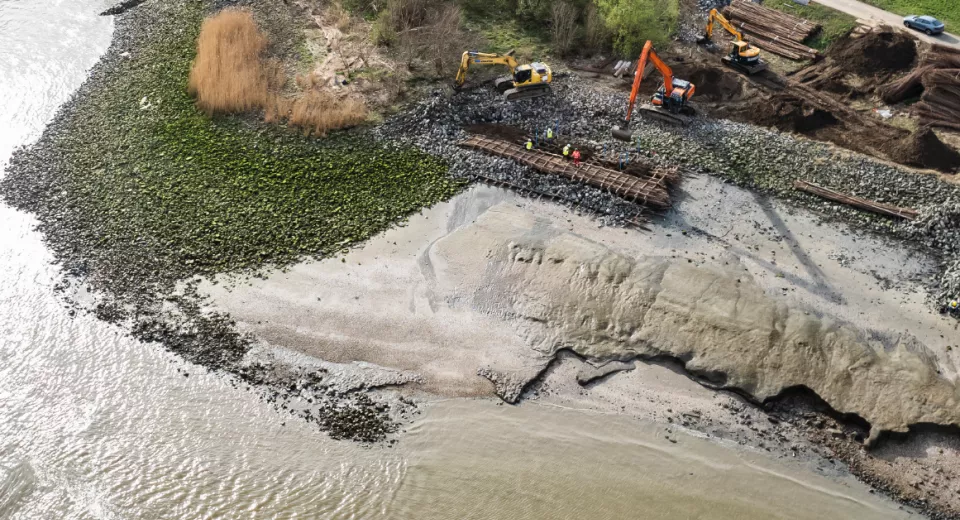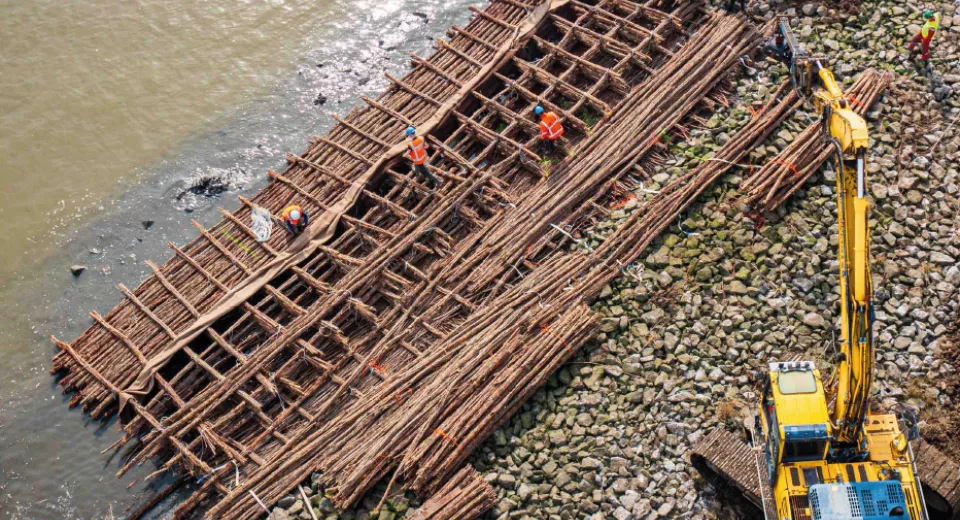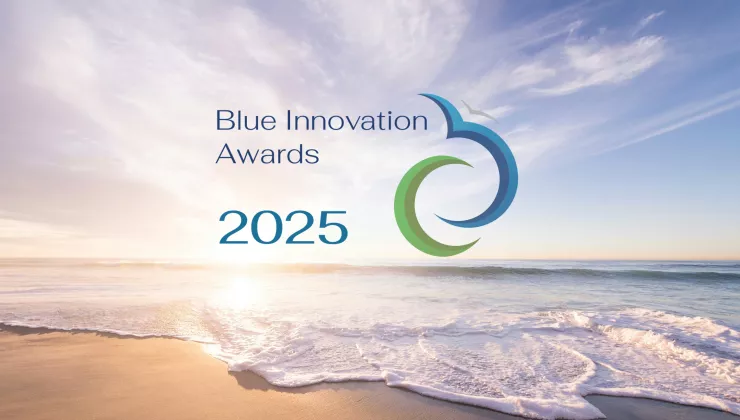Bankbusters demonstrates how nature can strengthen our riverbanks
Where technology and nature meet, innovation takes root. Within Bankbusters, maritime and academic partners worked together to design a living riverbank, built from soft dredged sediment, willow fascines and rock. This natural system not only protects against erosion and flooding, but also creates new space for plants and wildlife to thrive.
Innovation in practice
The insights from Bankbusters were put into practice at a pilot site along the Scheldt, where researchers and industry partners jointly developed a pioneering riverbank configuration. Experiments with natural building materials and smart engineering made it possible to work with tidal dynamics rather than against them.
At the heart of this approach are the so-called DRECO units, modular structures made of willow bundles, soft dredged material and locally sourced rock. These natural elements stabilize the bank, allow groundwater to circulate freely and create suitable conditions for marsh vegetation to take root. Step by step, they form a living landscape that reinforces itself over time.

Bankbusters also broke with traditional practice in its choice of materials. All components are biosafe and fully biodegradable, free from harmful substances or microplastics. Moreover, locally available dredged sediments were reused, reducing the ecological footprint and putting the principles of the circular economy into practice.
The result is an innovative riverbank protection system that not only defends against erosion and flooding, but also enhances biodiversity and stimulates natural processes - a tangible example of how infrastructure and ecology can reinforce each other.
Monitoring and knowledge building
To understand how the new riverbank structure performs over time, an extensive monitoring programme was established. Researchers continuously track the evolution of the marshland, as well as the overall stability of the bank.
Measurements of groundwater fluxes, sedimentation and vegetation growth provide insights into how the system adapts to tides and seasons. Drones and sensors enable real-time observation of changes and link them to the surrounding environmental dynamics.
This combination of field observations and data modelling forms the foundation for a scientifically grounded approach to future river restoration projects, directly connecting knowledge and practice.

Future potential
The results of Bankbusters show that nature-based solutions are not only ecologically sound, but also economically valuable. They offer a sustainable alternative to conventional riverbank protection while strengthening the natural resilience of our rivers.
The market for such applications is growing rapidly, both in Flanders and internationally. Governments and businesses are increasingly looking for ways to combine climate adaptation and biodiversity with economic development.
The knowledge gained through Bankbusters can therefore serve as a reference project for other estuaries worldwide, marking a concrete step towards climate-resilient waterways.
Check out the final report
Curious to learn how natural processes can both protect and reinforce our riverbanks? The full Bankbusters final report brings together all findings, results and recommendations from this forward-looking pilot project.
Partners
Bankbusters was made possible through close collaboration between DEME Group, iFLUX, Jan De Nul Group, the University of Antwerp and Ghent University. The project was facilitated by De Blauwe Cluster and carried out with the support of VLAIO – Flanders Innovation & Entrepreneurship.


